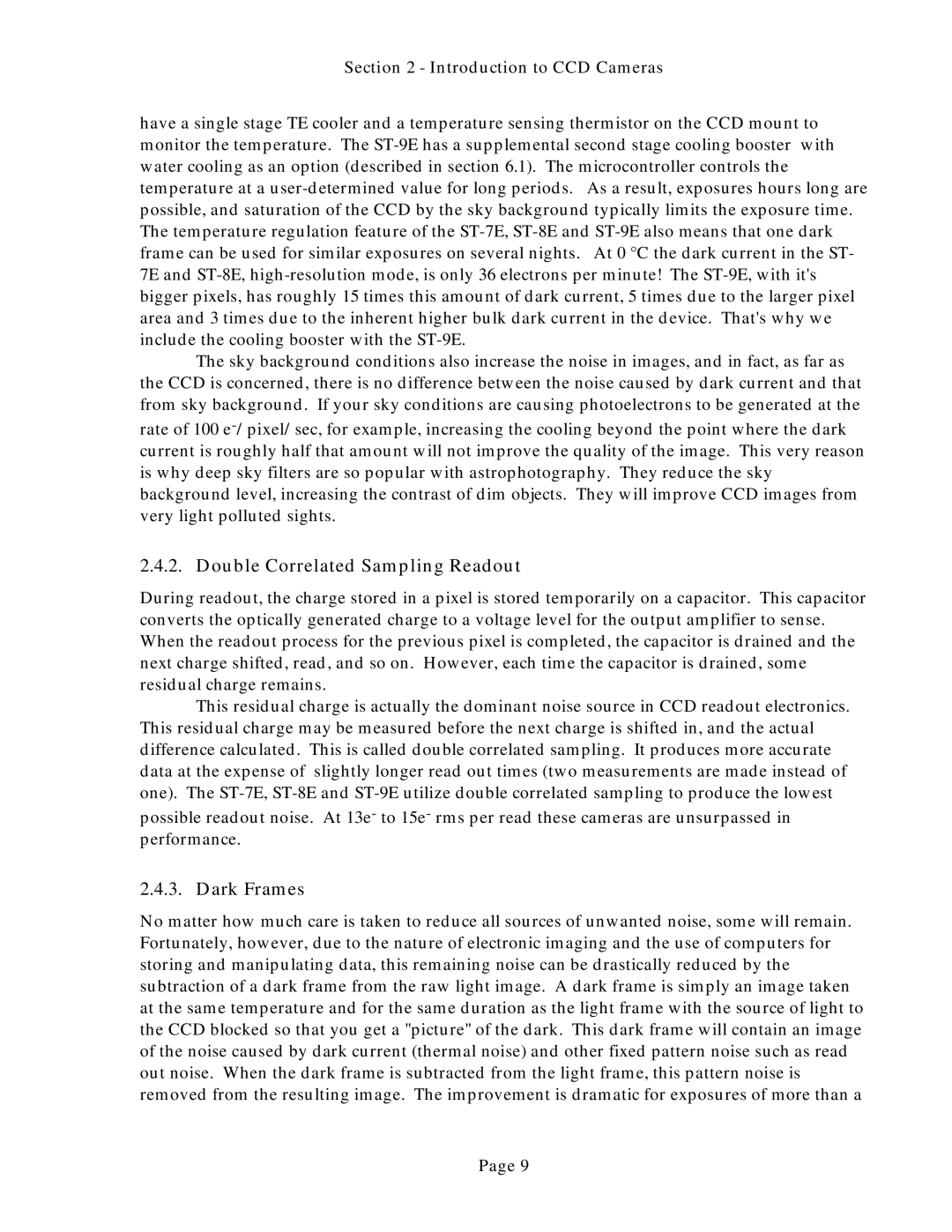Section 2 - Introduction to CCD Cameras
have a single stage TE cooler and a temperature sensing thermistor on the CCD mount to monitor the temperature. The
The sky background conditions also increase the noise in images, and in fact, as far as the CCD is concerned, there is no difference between the noise caused by dark current and that from sky background. If your sky conditions are causing photoelectrons to be generated at the rate of 100
2.4.2. Double Correlated Sampling Readout
During readout, the charge stored in a pixel is stored temporarily on a capacitor. This capacitor converts the optically generated charge to a voltage level for the output amplifier to sense. When the readout process for the previous pixel is completed, the capacitor is drained and the next charge shifted, read, and so on. However, each time the capacitor is drained, some residual charge remains.
This residual charge is actually the dominant noise source in CCD readout electronics. This residual charge may be measured before the next charge is shifted in, and the actual difference calculated. This is called double correlated sampling. It produces more accurate data at the expense of slightly longer read out times (two measurements are made instead of one). The
2.4.3. Dark Frames
No matter how much care is taken to reduce all sources of unwanted noise, some will remain. Fortunately, however, due to the nature of electronic imaging and the use of computers for storing and manipulating data, this remaining noise can be drastically reduced by the subtraction of a dark frame from the raw light image. A dark frame is simply an image taken at the same temperature and for the same duration as the light frame with the source of light to the CCD blocked so that you get a "picture" of the dark. This dark frame will contain an image of the noise caused by dark current (thermal noise) and other fixed pattern noise such as read out noise. When the dark frame is subtracted from the light frame, this pattern noise is removed from the resulting image. The improvement is dramatic for exposures of more than a
Page 9
